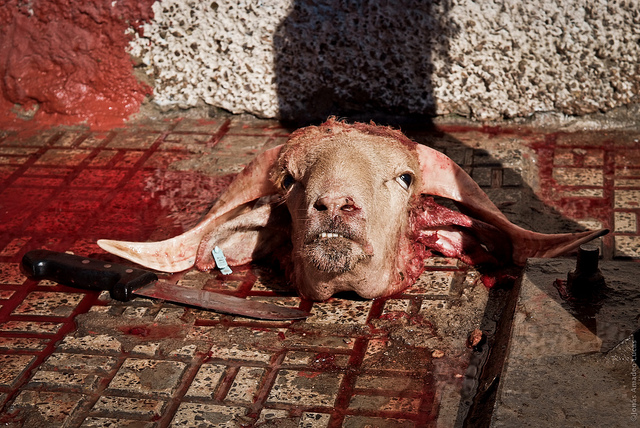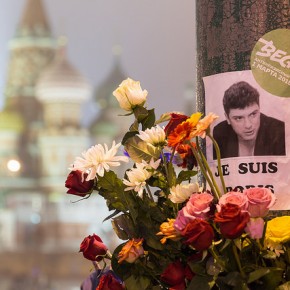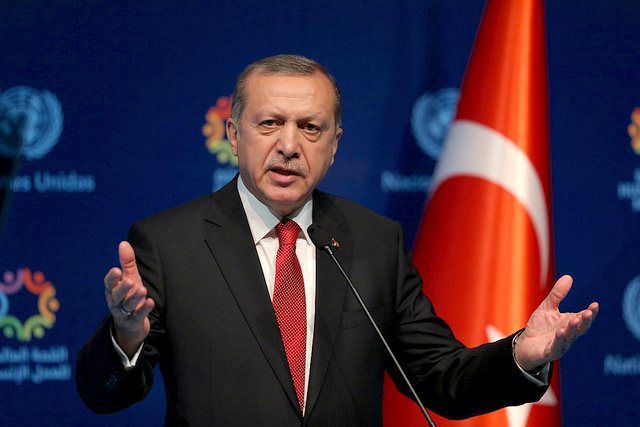It has been a few months since a major attack on Army Public School in Peshawar. As a result, Prime Minister Nawaz Sharif has signed off on additional state violence through the National Action Plan for counter-terrorism, and a faction of Tehreek-e-Taliban has taken responsibility for an attack on Lahore’s police headquarters in mid-February. The pattern is predictable.The Pakistani military launches brazen offensives in Khyber-Pakhtunkhwa and the Federally-Administered Tribal Areas, militants respond with bloodier attacks in urban areas, and the military prepares for another offensive.
The Peshawar shootings were unique, however, in that they led to the execution of convicts that were totally unrelated. Three days after the attack, Kashif Ali of The Express Tribune wrote an article entitled The death penalty is justified today, which called for the death of over seven hundred alleged terrorists, many of whom were arrested on dubious grounds. Indeed, even reliably left-wing commentators like Nadeem Paracha openly criticized Pakistan’s moratorium on the death penalty, arguing that it should apply to inmates charged with terrorism.
Many Pakistanis agreed with them, leading to a series of rushed hangings that have been slammed by Ban Ki-Moon, and fiercely criticized by Amnesty International. Despite an international backlash, the executions appear to be hugely popular. They have also added to the growing popularity of General Raheel Sharif, which has developed to the point that Dawn has published a fawning portrait of the man that implicitly calls on him to launch a coup. Many of these narratives have been stoked by Inter-Services Public Relations, a military propaganda outfit that is also responsible for a shameless video that “martyrs” the children killed in Peshawar.
ISPR bears much of the responsibility for a cultural and political atmosphere that has been violent enough to lead to what are essentially mass executions. Analysts and commentators tend to only discuss the executions at a surface level. Even critics will limit the discussion to strategic considerations. The problem is that the hangings are far more complicated than that. Yes, the executions are being used to boost the military’s popularity, and send a brutal message to Tehreek-e-Taliban. It is also the case that Pakistan is becoming reliant on using the security services to placate widespread feelings of anxiety and paranoia. It is even fair to say that the hangings are a process by which accused terrorists are ‘sacrificed’ as part of a perverse and archaic ritual.
First, some details about why the Peshawar shootings were so devastating. In On Violence, Slavoj Zizek argues that there are three forms of violence: symbolic, subjective, and objective. He contends that subjective violence is most terrifying for a society, not as a result of it being empirically worse, but rather, because certain sections of society experience it as a sudden aberration. It isn’t just that over 100 children were shot dead, although the murder of children is clearly a form of symbolic violence that attacks the sanctity of the family structure. It is also that for many Pakistanis, its sheer viciousness seemed to come out of nowhere, owing mainly to how processes of objective violence are effectively invisible.
Checkpoints, armed guards, and unofficial media blackouts help sustain the illusion of a non-violent zero point that is being violated by terrorism. As Human Rights Watch recently noted, the Pakistani military has “remained unaccountable for human rights violations and exercised disproportionate political influence, especially on matters of national security and counter-terrorism.” Essentially, Pakistan is always violent, but not everyone is aware of it in the same way. The interplay between these forms of violence, combined with children being the victims, is why political opportunists like ISPR were able to ride popular anger so easily. After the shootings, it wasn’t hard to convince people that terrorists needed to die. Fast forward, and Pakistan is burning through a kill list of 500 alleged terrorists.

However, the hangings are not solely motivated by blind rage. It is important to understand the usefulness of state violence in securing Pakistani national identity. Despite the Talibani insurgency being homegrown, many terrorists are being explicitly defined as foreigners. During Operation Zarb-e-Azb in mid-June, ISPR told Dawn that it killed “mostly Uzbeks” during an overnight bombing. Terms like “Arab-Afghans” are frequently used to condemn terrorists, less because the terminology is correct, and more because the “Arab” part of the hyphenation is automatically rejected as fundamentalist. Afghans themselves have been violently persecuted in the aftermath of the shootings, mainly because their migration has long been popularly linked to a growth in terrorism and drug-use in the country.
The message is clear. Terrorists aren’t just barbaric. They’re also strangers that pose a specifically foreign threat to the most privileged sections of Pakistani society. This makes groups like the Taliban useful for marking the lines of Pakistani nationalism itself. Bonnie Honig offers significant insights on this topic in her book Democracy and the Foreigner. In modern statecraft, foreignness is used as “a device that gives shape to or threatens existing political communities by marking negatively what we are not.” Irrespective of your personal details, you know that you’re a Pakistani Muslim because you’re not the Taliban.
Honig argues that this emphasis on policing outsiders is based on on seeing foreignness as a “threat of corruption” that potentially endangers a regime’s identity and stability. Perhaps the reason why is because the liberal tradition is full of stories of communities falling prey to corruption, shortly before foreigners and strangers become the agents of social renewal. Oedipus is a foreigner that solves the riddle of the Sphinx and saves Thebes. The Republic takes place in the house of a foreign merchant named Cephalus. Montesquieu critiques French society through the perspectives of foreigners in Persian Letters. Foreignness becomes held in contempt by elites mainly because the stranger can be the “cure for corruption, withdrawal, and alienation.”

Conversely, the stranger can also easily be seen as the source of those same problems. Just as the foreigner can inspire massive change by potentially importing “positive and necessary virtue,” it can also be condemned for poisoning society by disseminating negative virtue. This is certainly the case in Pakistan, where even minorities are being affected by a fusion of the “novelties, mysteries, and perspectives of outsiders” with the massive disruptions that characterize both neoliberalism, and the War on Terror. Strangers become constructed as foreign enemies of the state, and the Taliban becomes specifically associated with terrorism from outside the community. This has partially occurred for administrative reasons. The legal complications of practices like drone strikes almost necessitate the use of what Giorgio Agamben calls homo sacer, where an excluded subject is only included in the judicial order when it comes to their “capacity to be killed.” People who are categorised this way inevitably become ‘othered’.
The status of convicted terrorists as outsiders has resurrected the idea of human sacrifice. Adorno and Horkheimer argue in The Dialectic of Englightenment that fascists viewed Jews as representations of various European “corruptions” of the time, ranging from unacceptable artistic movements, to lifestyles with no direct relationship to production. They were othered as scapegoats, and became figureheads that could be used to discharge widespread paranoia and social anxiety. The next step was simply using organized violence to purge the corruption entirely. Importantly, this application of violence, as a ritual for purging corruption, partakes in the same energies as religious practice. Before the advent of monotheism, and later secularism, animals such as lambs would have been sacrificed in the Roman Empire to maintain cosmic balance during times of corruption.
Despite the decline of polytheistic sacrifice in daily life, that impulse has remained. Nazi Germany was a period during which Jews and other groups became the new fodder for sacrifice. Othered subjects replaced the sacrificial lamb, and were offered to the gods in order to placate social insecurities, and correct a sense of cosmic imbalance. Fascinatingly, this process ultimately vindicates Honig’s belief that “sometimes, foreignness operates as an agent of refounding.” The Nazis sought to build the Aryan master race on the bones of these sacrifices. Their deaths meant that corruption had been torn from the social fabric, and that an entirely new community had been formed in the bloodshed.
Pakistan is certainly not Nazi Germany. However, this process is frighteningly apparent in the current zeal for executing alleged terrorists. They are being killed for an attack they did not commit, since the shootings were the point at which the moratorium was lifted. There are two reasons why: (1) Because the hangings placate a sense of cosmic injustice, and (2) Because the hangings establish a new Pakistani society that is free of the strange and vicious qualities that terrorists represent. Once again, it is crucial to remember the exact context in which many sacrifices were performed in the ancient world. They were offerings that were used to placate the gods as regulators of divine principles like justice. If devotees wanted justice, they offered sacrifices. After the sacrifices were complete, those principles would hopefully be realized in the community itself.
We should return to the title of Kashif Ali’s article, The death penalty is justified today. Why did Ali have such a strong desire to execute inmates? Did he believe that the death penalty is logically the best response to the attack? Or did he, like many Pakistanis, believe that someone needed to die, in order to channel a widespread yearning for justice? Is the death penalty itself the focus of the debate, or does the secularized concept of justice itself simply require human blood in order to be brought into the world? It is clear that terrorists are being hanged so that their killers have the ability to sort through material and existential problems. They are being sacrificed. Only time will tell if this works, and whether or not a new Pakistani community is currently building itself on the bones of embattled minorities and convicted terrorists.
Photographs courtesy of TheAnimalDay.org, United Nations Photo, and Jayel Aherem. Published under a Creative Commons License.





